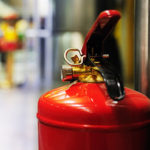Workplace Ventilation
Perhaps you performed your workplace risk assessment several years ago and ensured that your workplace was “ventilated by a sufficient quantity of fresh or purified air” in accordance with Regulation 6 of the Workplace Health, Safety and Welfare Regulations. However, now you find some rooms to be hot or stuffy. Perhaps it’s time to assess and correct the ventilation.
HSE gives guidance on how to assess ventilation on its website. (See https://www.hse.gov.uk/ventilation/assessing-the-risk-of-poor-ventilation.htm.) This web page states: “HSE’s Approved Code of Practice and guidance (PDF) [see page 18, paragraph 57] states that ‘The fresh-air supply rate should not normally fall below 5 to 8 litres per second, per occupant.’ A value of 10 litres per second per person is recommended in some building guides as a suitable value for most commercial buildings.”
To measure the fresh-air supply rate, the HSE suggests using a CO2 monitor. Other assessment measures include talking to workers.
The following example from the HSE website (https://www.hse.gov.uk/ventilation/examples-of-improving-ventilation.htm) shows how a company assessed meeting room ventilation and how it made changes to improve it.
A company had CO2 monitors mounted on the walls of their meeting rooms. The readings could give a rough indication of whether ventilation is sufficient to comply with health and safety law.
The business had installed the monitors as workers were concerned that air in the meeting rooms felt warm and stuffy at certain times. Managers were not sure when poor ventilation was a problem.
They found that levels of CO2 indicated poor ventilation after 2.5 hours and they remained high for a long period of time, even after the room had been vacated. They noted that windows had been painted shut, though ventilation bricks were in place.
Changes to achieve adequate ventilation
- The business scheduled work to reopen windows that had been painted over
- In the interim, managers explained that meetings should be kept to a maximum of 2 hours and the door should be kept open between use
- They continued to monitor CO2 levels to assess whether the level of ventilation was acceptable until the windows could be opened
- Once the windows were reopened, CO2 levels indicated that ventilation was adequate
Supervisors and managers can gain an in-depth understanding of the risk assessment process, as well as other health and safety regulatory requirements, by attending Emcare’s IOSH Managing Safely course. Delegates will be asked to identify hazards and ways of managing risk, as well as to complete workplace risk assessment projects.
Source: Article contains public sector information published by the Health and Safety Executive.



